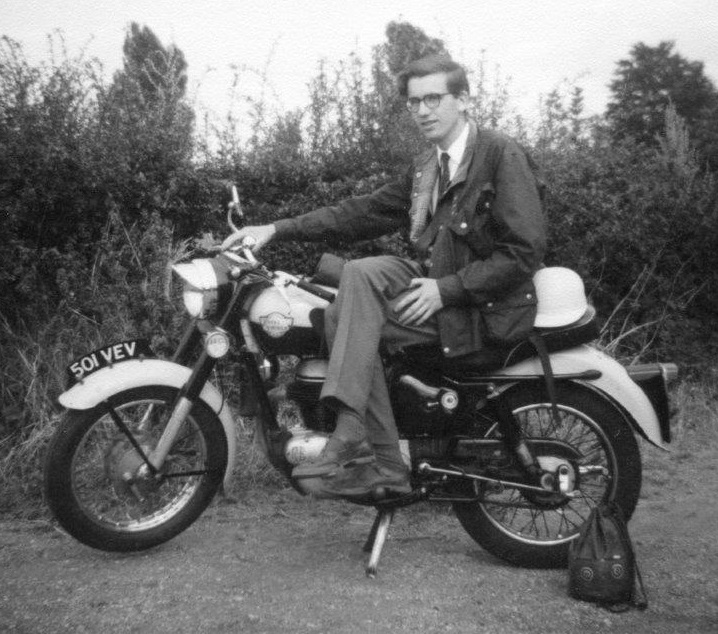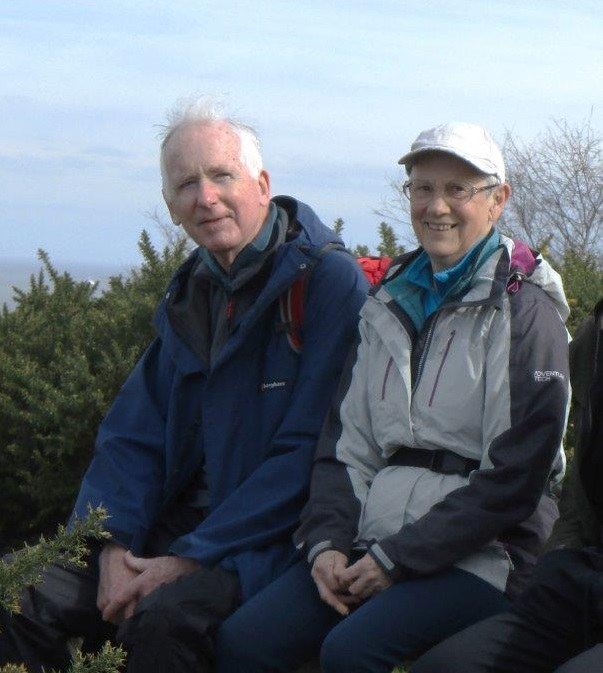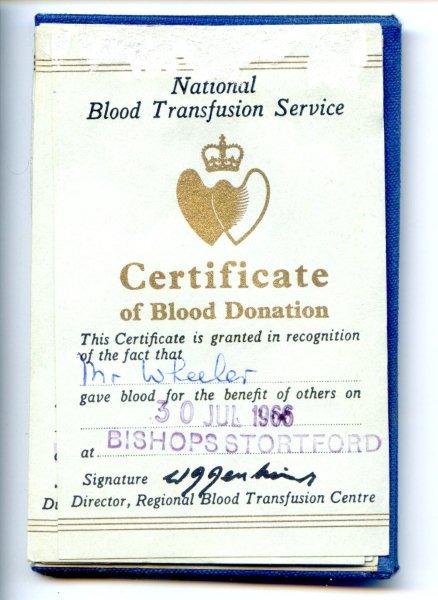Roy Wheeler
Roy is still donating, 60 years after he first rolled up his sleeve.
 I started giving blood in 1961 when I was 18, but for the wrong reason. I was working in the laboratories of a veterinary research farm in the countryside belonging to Allen and Hanburys. The chance for five of us to pile into a car for a half day visit to the main research and production site some seven miles away at Ware, where the blood donation sessions were held, was seen as a great opportunity for a skive.
I started giving blood in 1961 when I was 18, but for the wrong reason. I was working in the laboratories of a veterinary research farm in the countryside belonging to Allen and Hanburys. The chance for five of us to pile into a car for a half day visit to the main research and production site some seven miles away at Ware, where the blood donation sessions were held, was seen as a great opportunity for a skive.
(Picture: Roy Wheeler started to donate in 1961)
What a contrast donating now is compared to that first donation! Blood was taken into glass bottles and donors lay on metal stretcher-type beds. The rest period after giving blood was much longer. But the measurement of haemoglobin remains unchanged and still involves dropping a sample into copper sulphate solution. Then we received a sticker to put in a book as a record of our donation, now of course the records are all digital.
Whilst working at Allen and Hanburys, I understood that the prototype work on the plastic pack now used for blood donations and all intravenous drips was done there, and that one of the packs was dropped from a tall building onto the car park below without splitting!
Soon after, I moved to the pathology department at Herts and Essex General hospital. I was crossmatching blood and part of the 24 hour on-call system. I soon appreciated the real reason to donate and spent the rest of my working career in the NHS. I must have crossmatched thousands of units of blood in my career, a lot of which was in the middle of the night.
 I met my wife, Sue, in the laboratories and together we have donated more than 230 units of whole blood, both of us achieving our 100th award.
I met my wife, Sue, in the laboratories and together we have donated more than 230 units of whole blood, both of us achieving our 100th award.
(Picture: Roy and his wife Sue)
Later in my career, I moved for promotion to Princess Alexandra Hospital in Harlow, to work in the Biochemistry Department. But I continued to cover on-call duties, which of course meant cross-matching blood. I was on-call one evening when an operation by the consultant urologist didn't go to plan and I cross-matched a very large number of units of blood throughout the night and helped to ensure a satisfactory outcome. The consultant came into the laboratory in the morning and went into the blood transfusion department to thank them for their work throughout the night. Apparently, they replied, 'That's alright' and failed to tell him they had nothing to do with it and the person who he should see was working just along the corridor in Biochemistry!
It's simple and painless and will help someone in need.
There are couple of donations that I remember the most. The afternoon of July 30th, 1966, I was donating blood at my local blood donor session. On completion, I raced off on my Royal Enfield motorcycle to my grandparents, some six miles away, as they had a television and we didn't have one at home, hoping that the match wasn't over. Fortunately, I arrived to see extra time! If you are not a football fan this was the date of the World Cup final at Wembley where England defeated West Germany 4-2.
 On another occasion an observant nurse asked me about a lesion on my forehead, suggesting that I should see my doctor, something that I try to avoid.
On another occasion an observant nurse asked me about a lesion on my forehead, suggesting that I should see my doctor, something that I try to avoid.
(Picture: Roy's National Blood Transfusion Service certificate from 1966)
I was referred to the local hospital where a basal cell carcinoma, which is a form of skin cancer, was successfully removed. Not only did the recipient benefit from my donation but the donor, me, is grateful to an observant nurse.
Now I am 79 years old and still donating. I would certainly encourage everyone to donate if they comply with the criteria.
It's simple and painless and will help someone in need. Don't assume just because you have a common blood group that it won’t be needed. The percentage of patients needing it will be greater.

